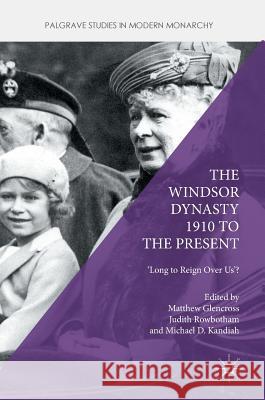The Windsor Dynasty 1910 to the Present: 'Long to Reign Over Us'? » książka
topmenu
The Windsor Dynasty 1910 to the Present: 'Long to Reign Over Us'?
ISBN-13: 9781137564542 / Angielski / Twarda / 2016 / 290 str.
Kategorie:
Kategorie BISAC:
Wydawca:
Palgrave MacMillan
Seria wydawnicza:
Język:
Angielski
ISBN-13:
9781137564542
Rok wydania:
2016
Wydanie:
2016
Numer serii:
000793605
Ilość stron:
290
Waga:
0.50 kg
Wymiary:
21.08 x 14.73 x 2.29
Oprawa:
Twarda
Wolumenów:
01
Dodatkowe informacje:
Bibliografia
Wydanie ilustrowane
Wydanie ilustrowane











